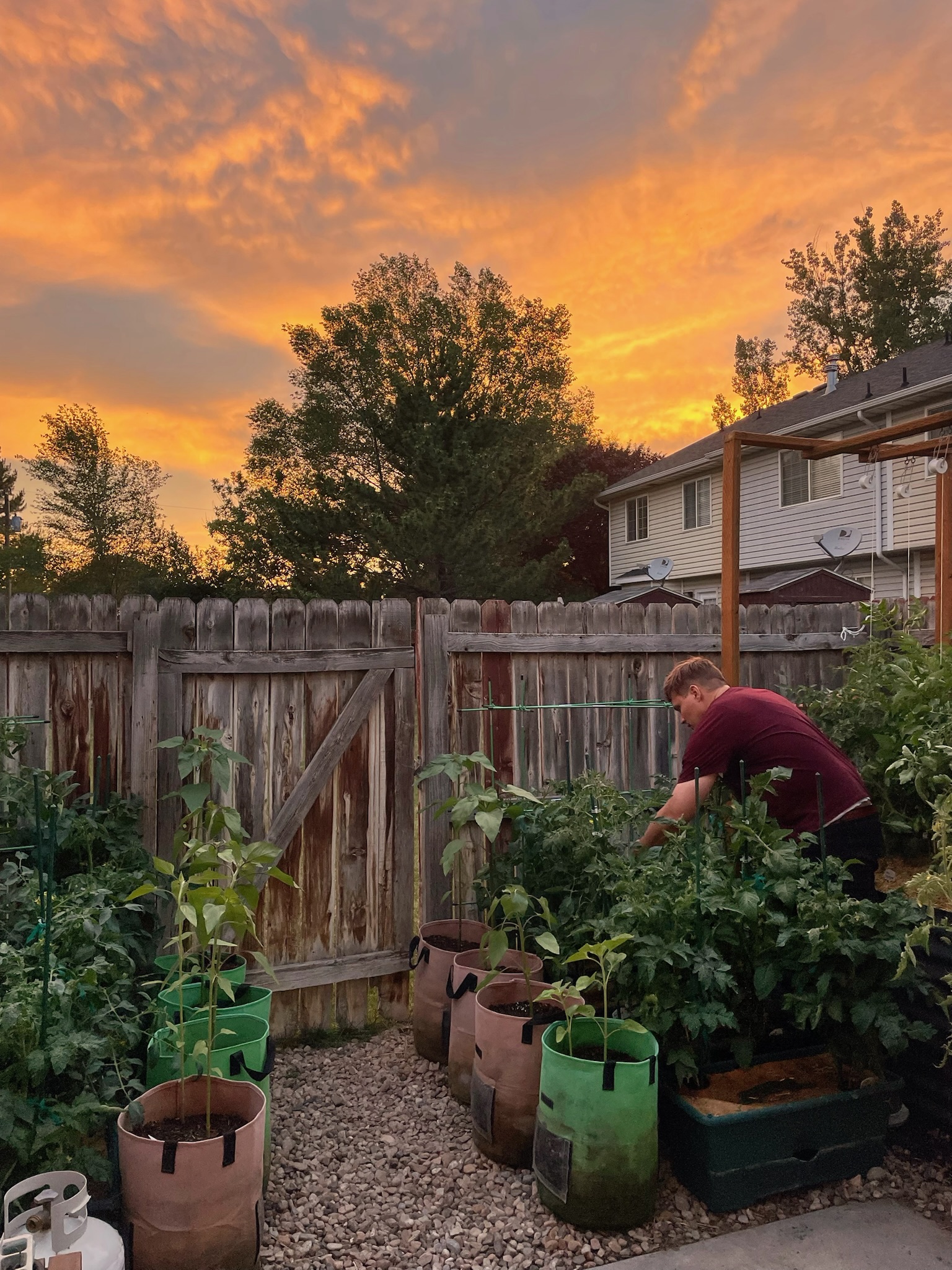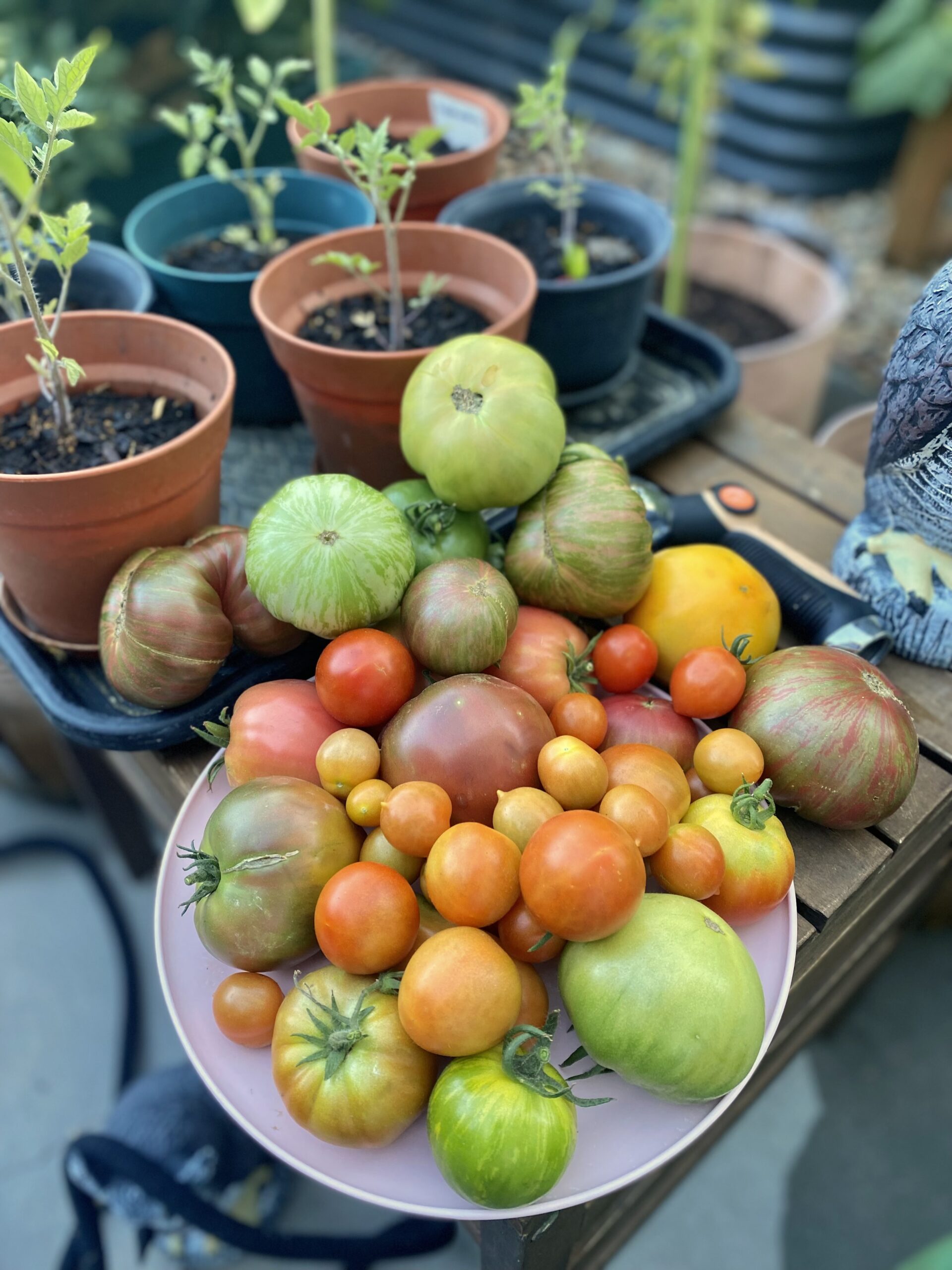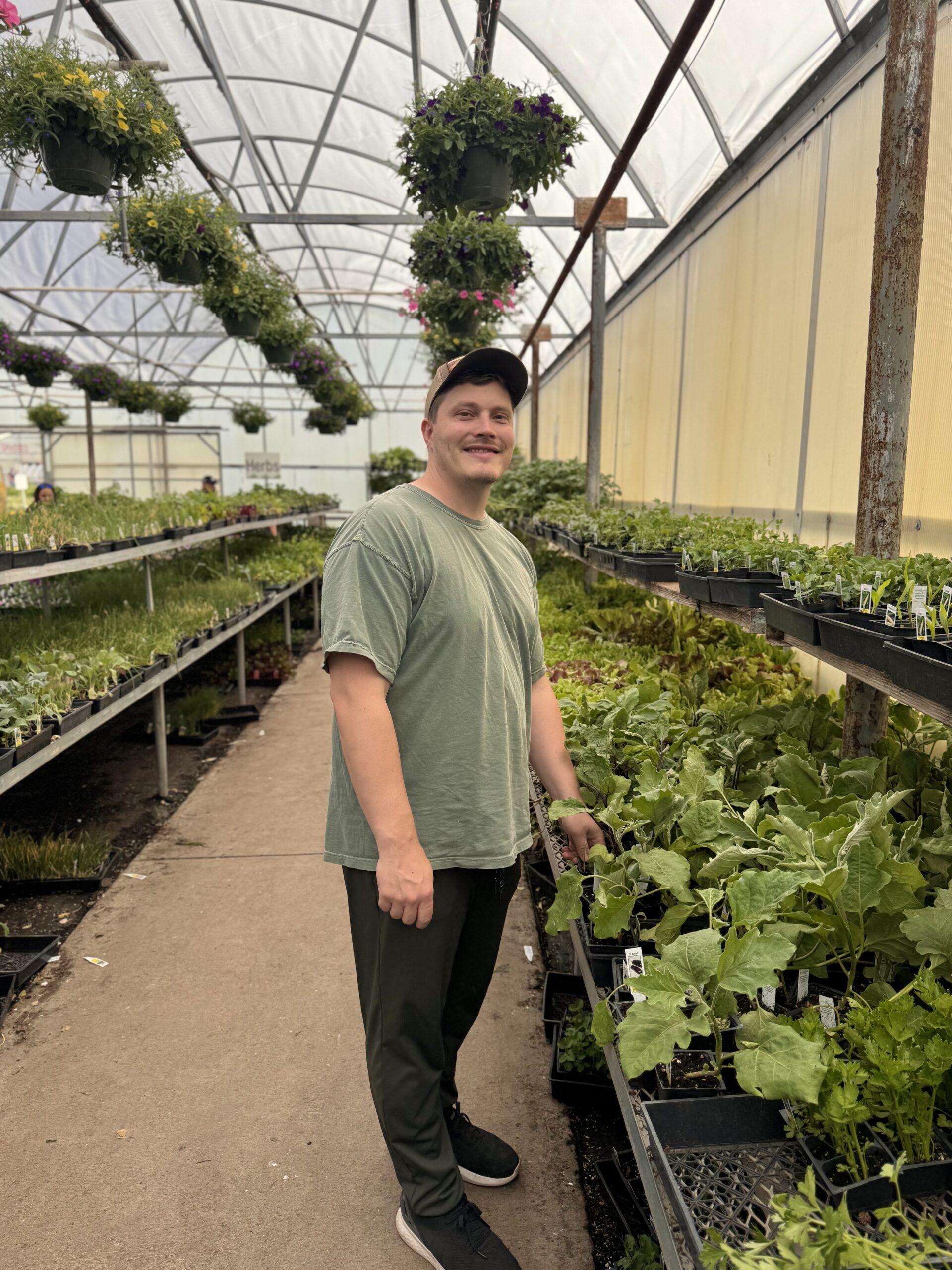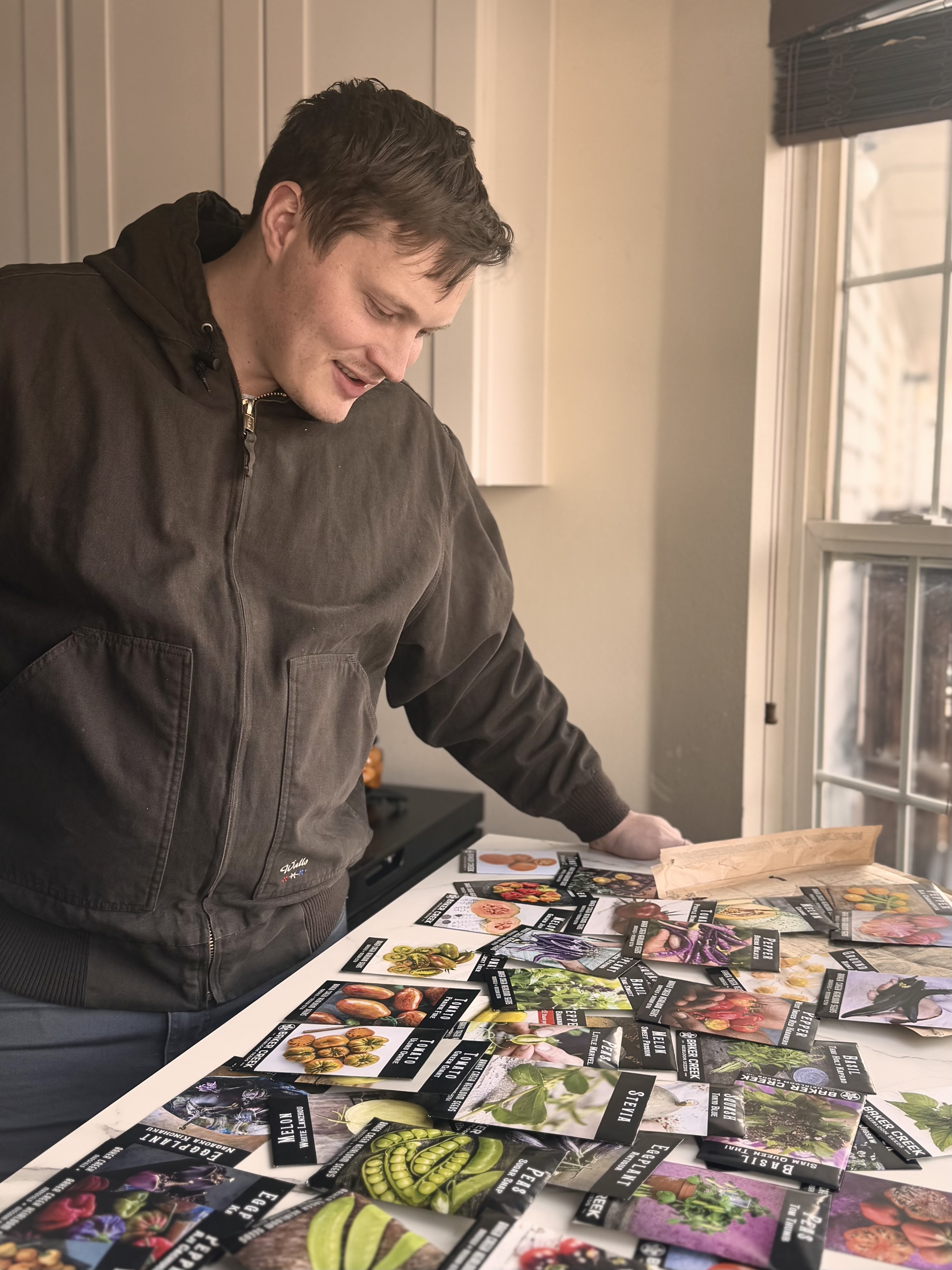
Hey all! Real Farmer Jeff here.
I recently learned from one of my followers (shoutout Alyssa!) that you can sometimes find free seeds at local libraries.
I was so intrigued that I checked out three libraries in my area. I found that one library didn’t have a seed program, another had one that was mid-tier (about 10ish varieties that had been picked over), and another had one that was incredible (30ish varieties that were fully stocked).
From the checkout sheet, I could see that most people took 1-4 varieties. The printed instructions for the program explained that you could return more of the same seeds in the same packet the following year, but it was not a requirement. Surprisingly, I didn’t even need a library card to check out seeds!
This seed library was so incredible I would seriously call or visit your local library to see what programs exist in your area!
Seed Libraries: What They Are & Why They Exist
Definition:
A seed library is a community resource, often located in public libraries, that offers free seeds to the public. Users “borrow” seeds, grow plants, and optionally return seeds from their harvest to keep the collection going.
Purposes:
- Promote Sustainability & Food Security: Encourages home gardening and access to fresh produce.
- Preserve Biodiversity: Focus on heirloom and open-pollinated varieties.
- Educate Communities: Fosters knowledge about ecology.
- Build Community: Connects people through shared local growing efforts.
- Adapt Seeds Locally: Promotes plant varieties that grow well in specific regions.
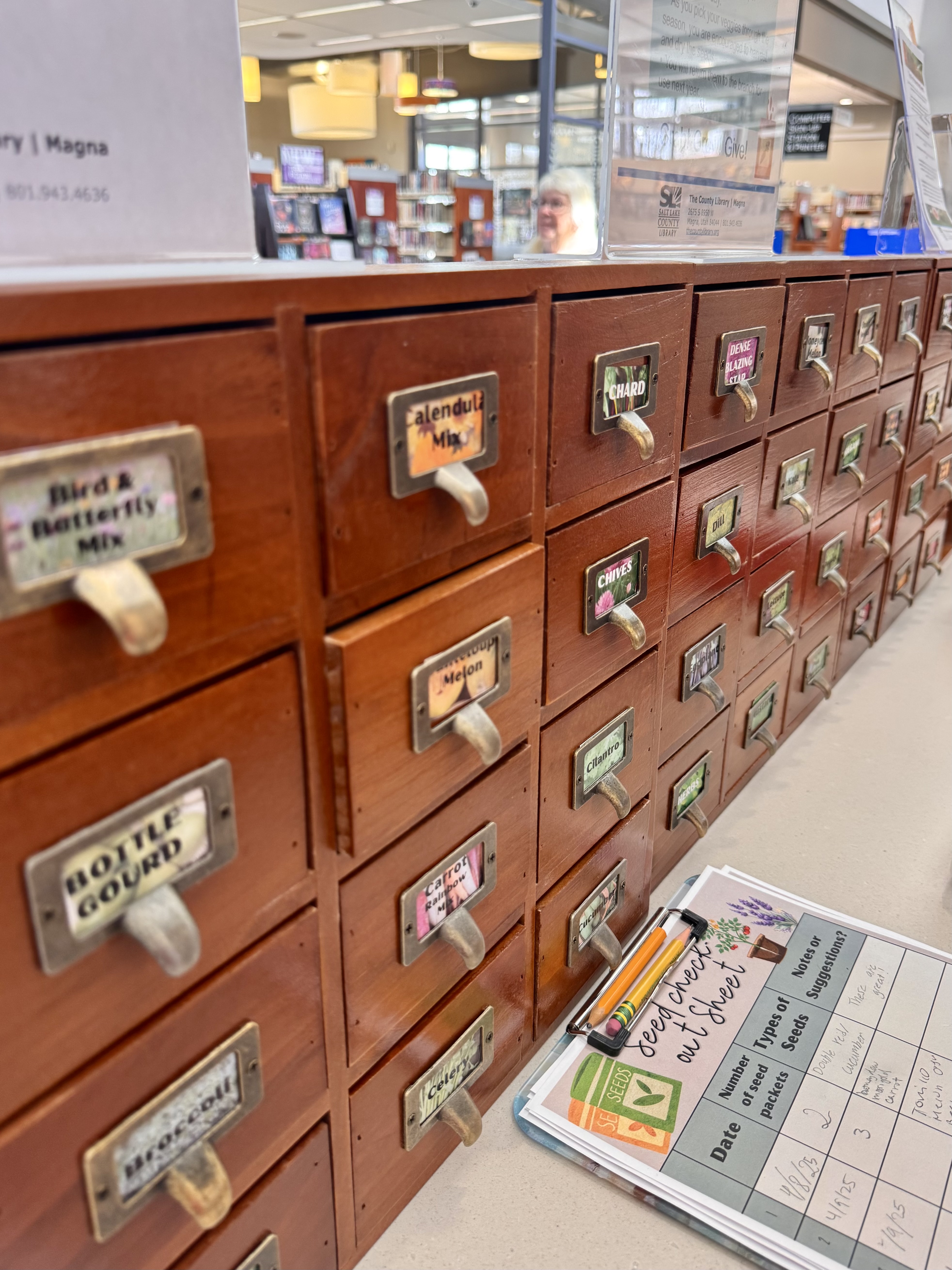
How It Works:
- Browse available seeds.
- Take a limited number to grow.
- Learn from available guides and resources.
- Optionally return seeds after harvest.
- Participate in events and workshops.
Fun Fact: There are over 500 seed libraries across the U.S., often hosted in public libraries.
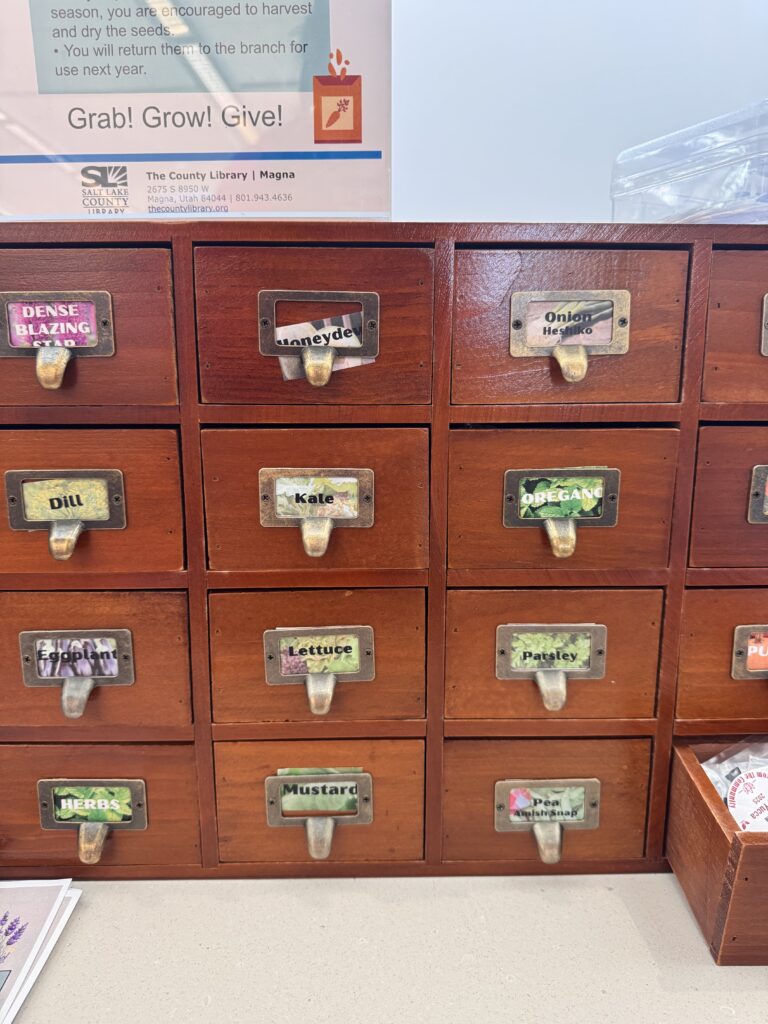
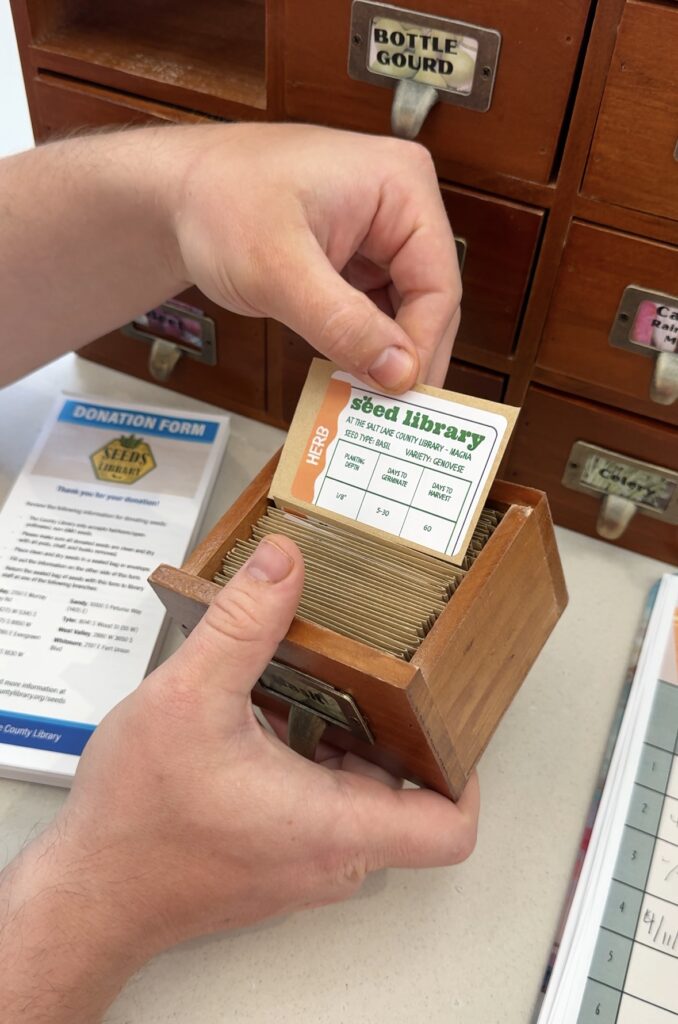
Best Additional Ways to Get Free or Cheap Seeds
1. Seed Swaps (Local & Online)
Description: Events or online platforms where gardeners exchange seeds.
Where to Find:
- Local gardening groups
- Libraries or community centers
- Facebook groups
- Reddit: r/SeedSwap etc.
New to gardening? Many swaps welcome beginners without requiring trades.

2. Free Online Seed Programs
| Program | Description |
| FreeHeirloomSeeds.org | Offers free heirloom seed packs (donations encouraged). |
| Seed Savers Exchange | Occasional giveaways and affordable heirloom seeds. |
Tip: Apply early – some programs are seasonal with limited availability.
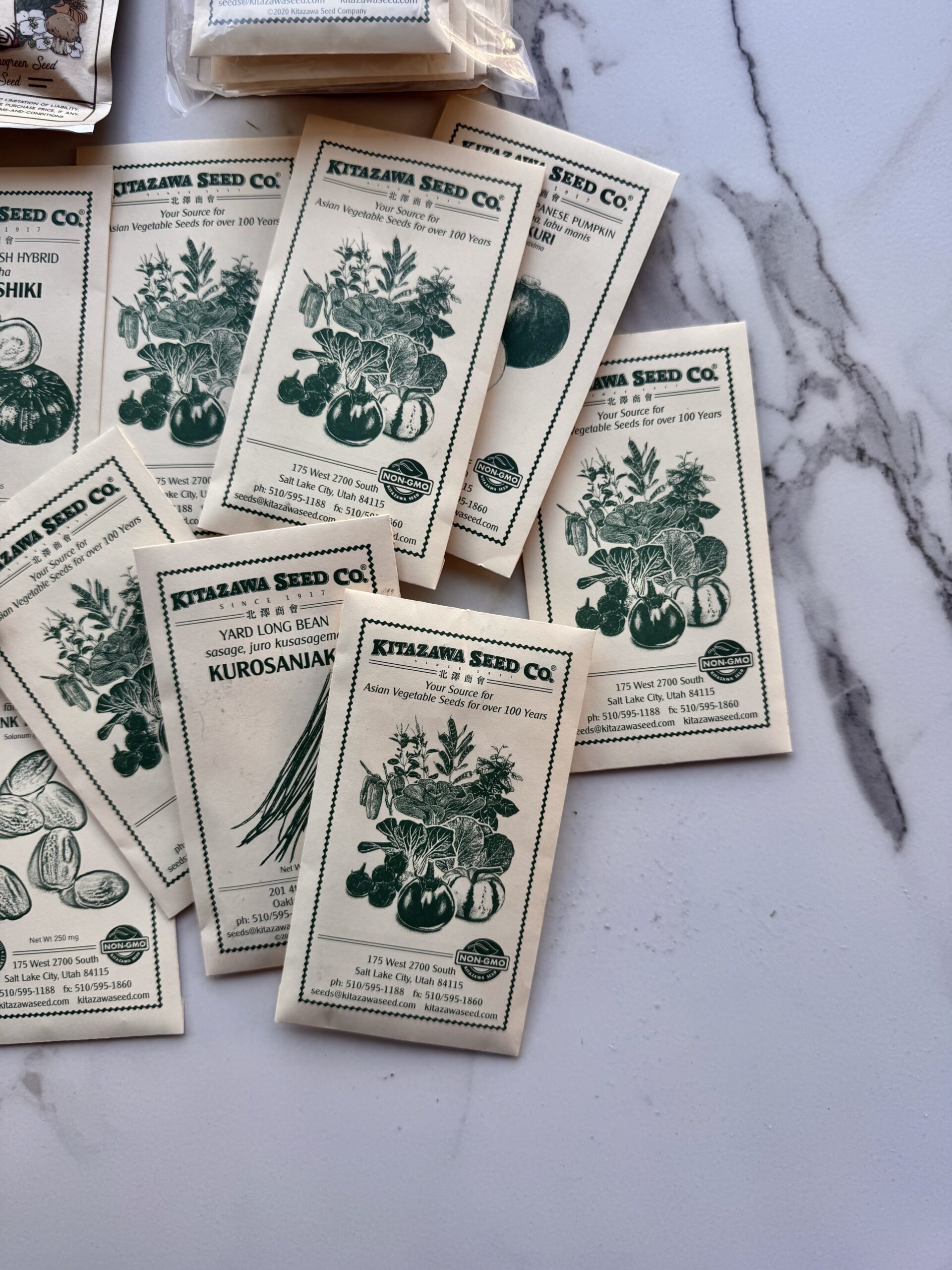
3. Grow from Grocery Store/Kitchen Scraps
Can You Plant Fresh Seeds? Yes, for some! Others need drying or preparation first. Here’s a breakdown:
Seeds You Can Often Plant Fresh (No Drying Needed):
- Tomatoes: Yes, but fermenting improves germination. Let pulp sit in water 2-3 days, then rinse and plant. (more information at the bottom of blog post)
- Peppers: Often viable straight from ripe fruit.
- Cucumbers & Squash: Must be overripe to have viable seeds. Store cucumbers are usually harvested too early.
Seeds Best Dried Before Planting:
- Melons & Watermelons: Dry seeds a few days to avoid rot.
- Beans, Lentils, Peas: Use dried (uncooked) versions. Canned beans will not sprout.
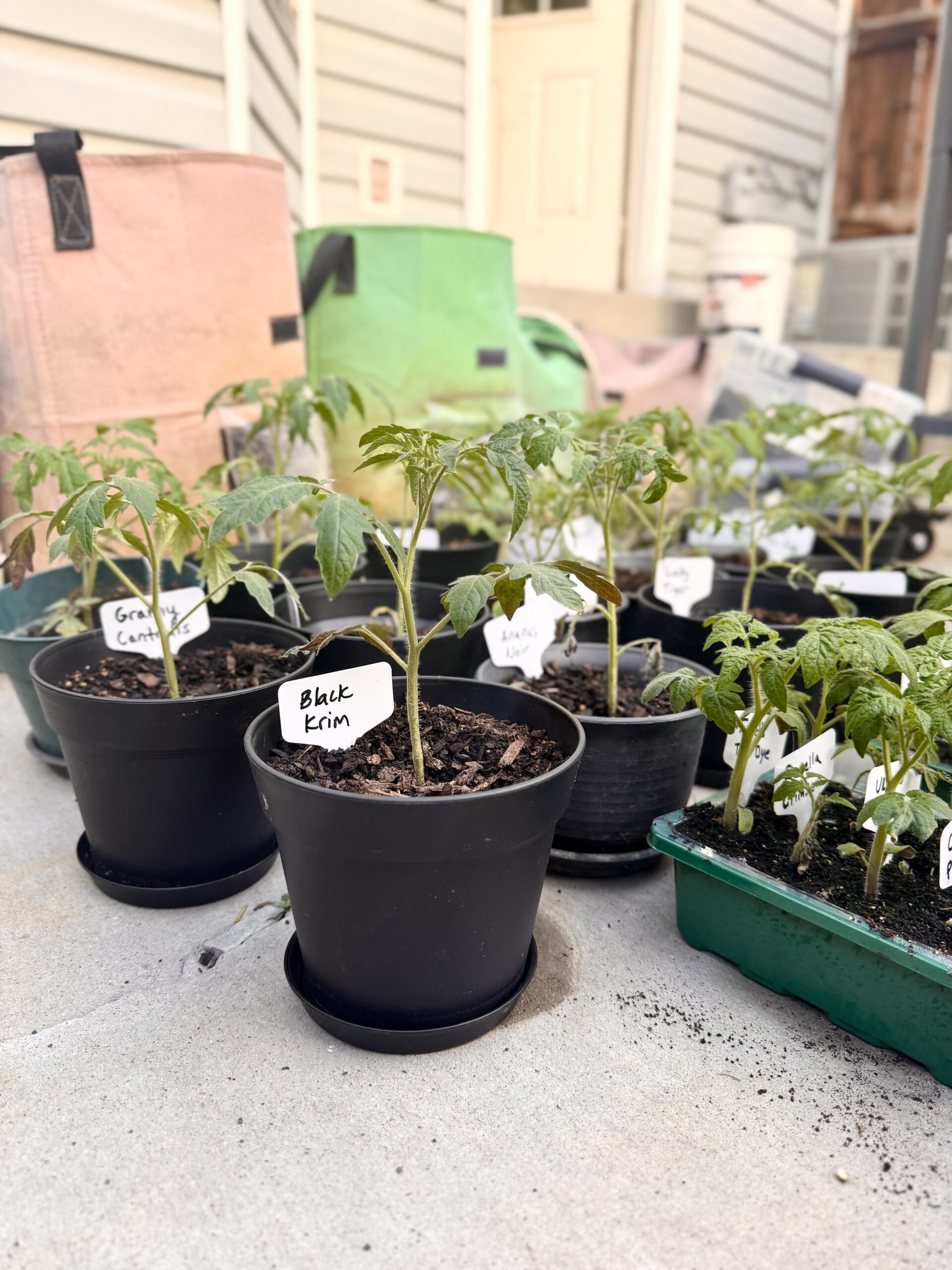
Seeds That Usually Won’t Work:
- Apples, Citrus, Grapes, etc.: Often immature, irradiated, or need cold stratification. Fun to try, but results are uncertain and slow-growing.
Tips:
- Choose organic produce when possible.
- Label your seeds and track dates.
- Have fun experimenting — it’s a great learning process!
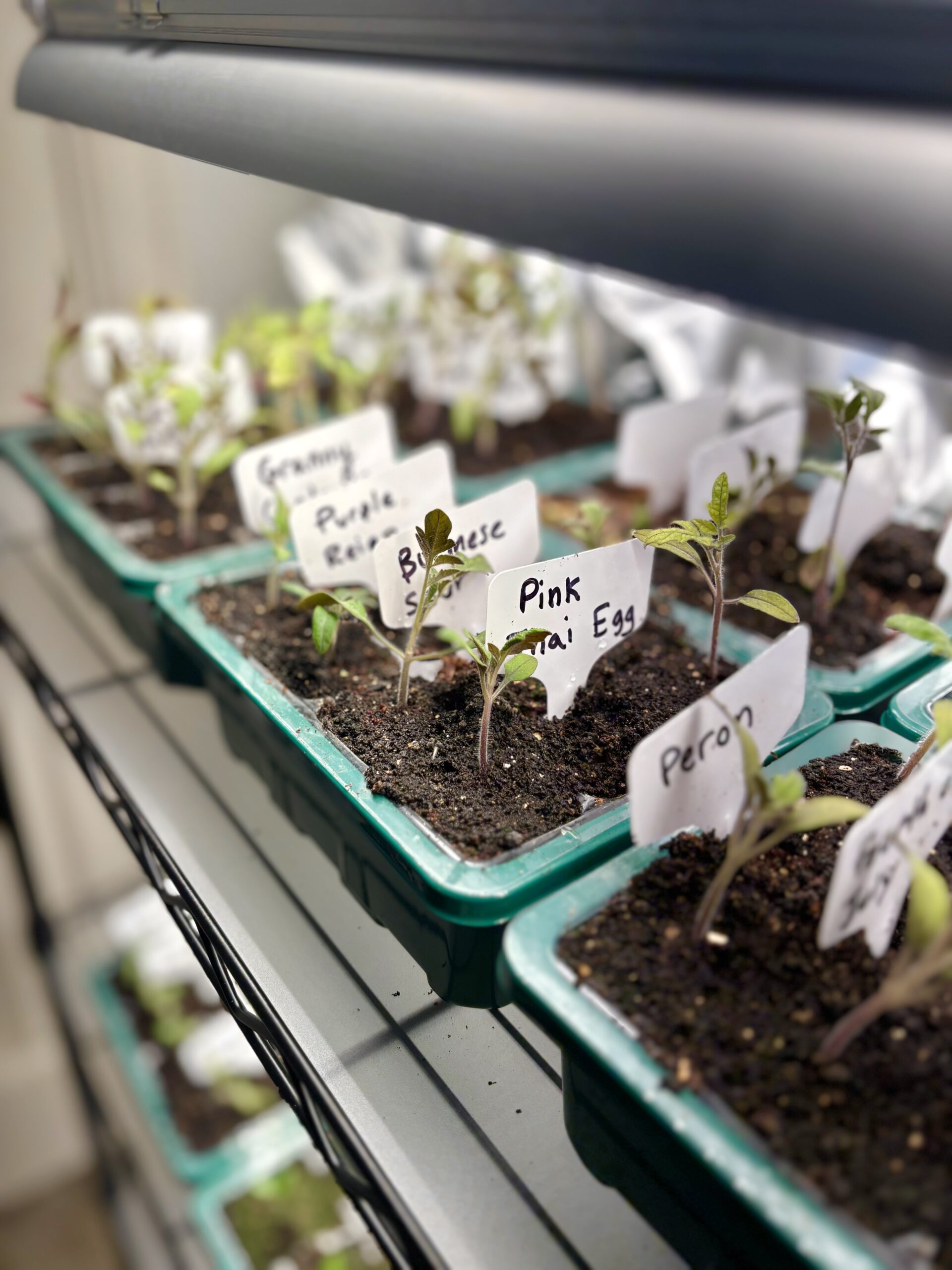
4. Local Resources: Gardening Groups & Extension Services
Where to Look:
- County extension offices
- Master Gardener programs
- Community gardens and urban farms
- Food banks with garden support programs
Many offer seasonal starter kits or free seeds.
5. Save Your Own Seeds Directly From the Fruit/Flower/Vegetable (Seed Saving)
Best for Beginners:
- Beans
- Peas
- Lettuce
- Tomatoes
- Marigolds
- Sunflowers
Tips:
- Use open-pollinated (not hybrid) varieties.
- Store in cool, dry conditions, labeled by type and date.
- Saved seeds can adapt to your local environment!

How to Ferment Saved Tomato Seeds for Planting
Why Ferment?:
- Removes the gel coating around seeds, which contains germination inhibitors.
- Kills off mold, fungi, and some seed-borne diseases.
- Mimics the natural rotting process of a tomato on the ground — nature’s way of prepping seeds!
What You’ll Need:
- A ripe tomato
- A small jar or cup
- A spoon
- Water
- Paper towel or cloth to cover the jar
- Strainer or sieve
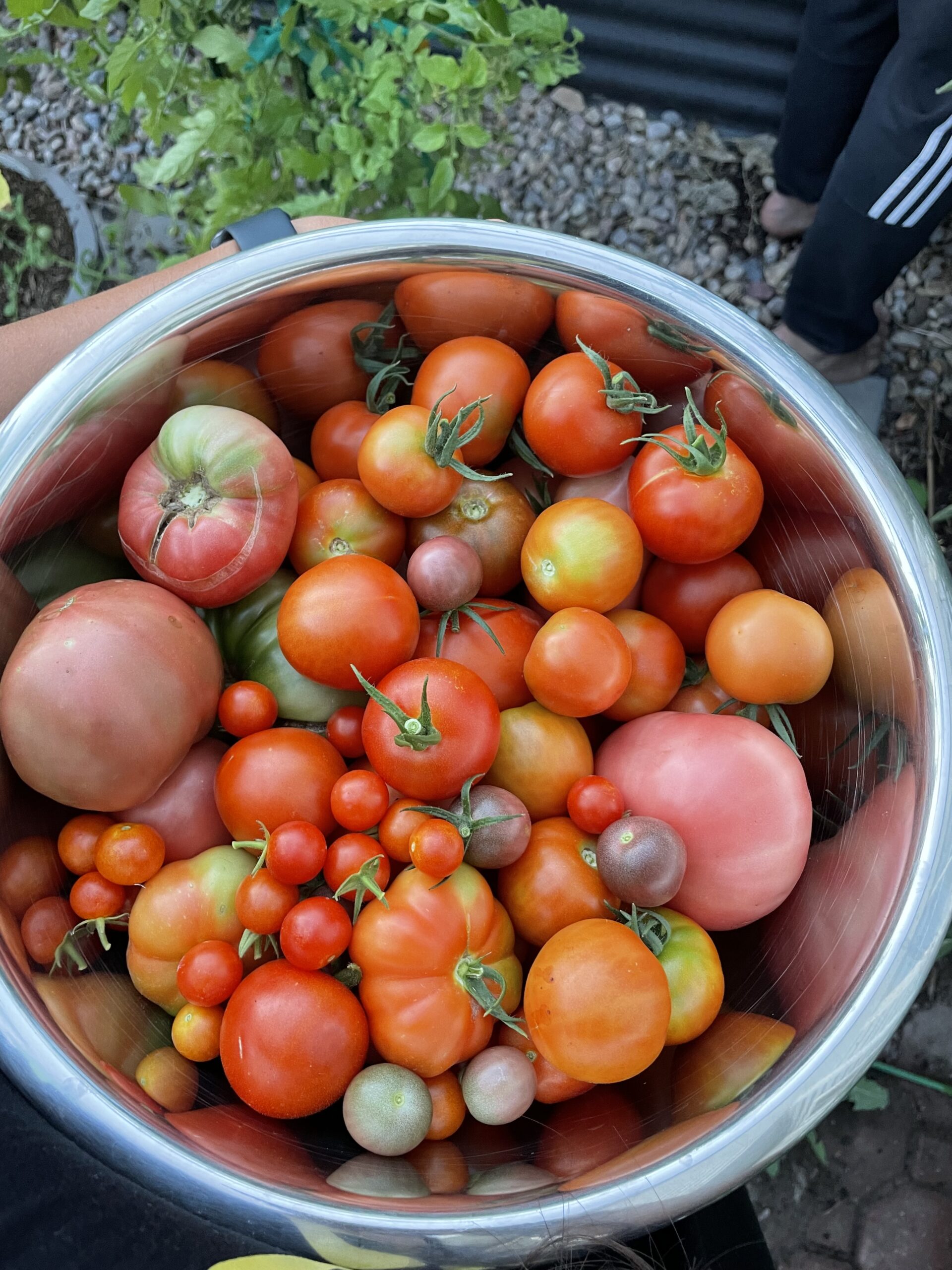
Step-by-Step Instructions:
- Scoop Out the Seeds
- Cut the tomato in half.
- Use a spoon or fingers to scoop out the seeds with the surrounding gel, and place it all into a container.
- Add a Bit of Water
- Add about 1 – 2 tablespoons of water to thin the mixture.
You don’t need much – just enough to help it slosh around.
- Add about 1 – 2 tablespoons of water to thin the mixture.
- Let It Sit & Ferment
- Cover loosely with a paper towel, cloth, or coffee filter to keep flies out but let air in.
- Place it in a warm area (60 – 80°F / 15 – 27°C), away from direct sunlight. Let sit for 2 – 4 days.
- Watch for: A white/grayish mold layer will form — that’s normal! It should smell a little funky, like sour fruit.
- Strain & Rinse
- Once fermented, add more water, swirl, and let the mixture settle. Good seeds sink – bad seeds, mold, and pulp float.
- Pour off the junk, keeping the good seeds at the bottom.
- Repeat 2 – 3 times until clean.
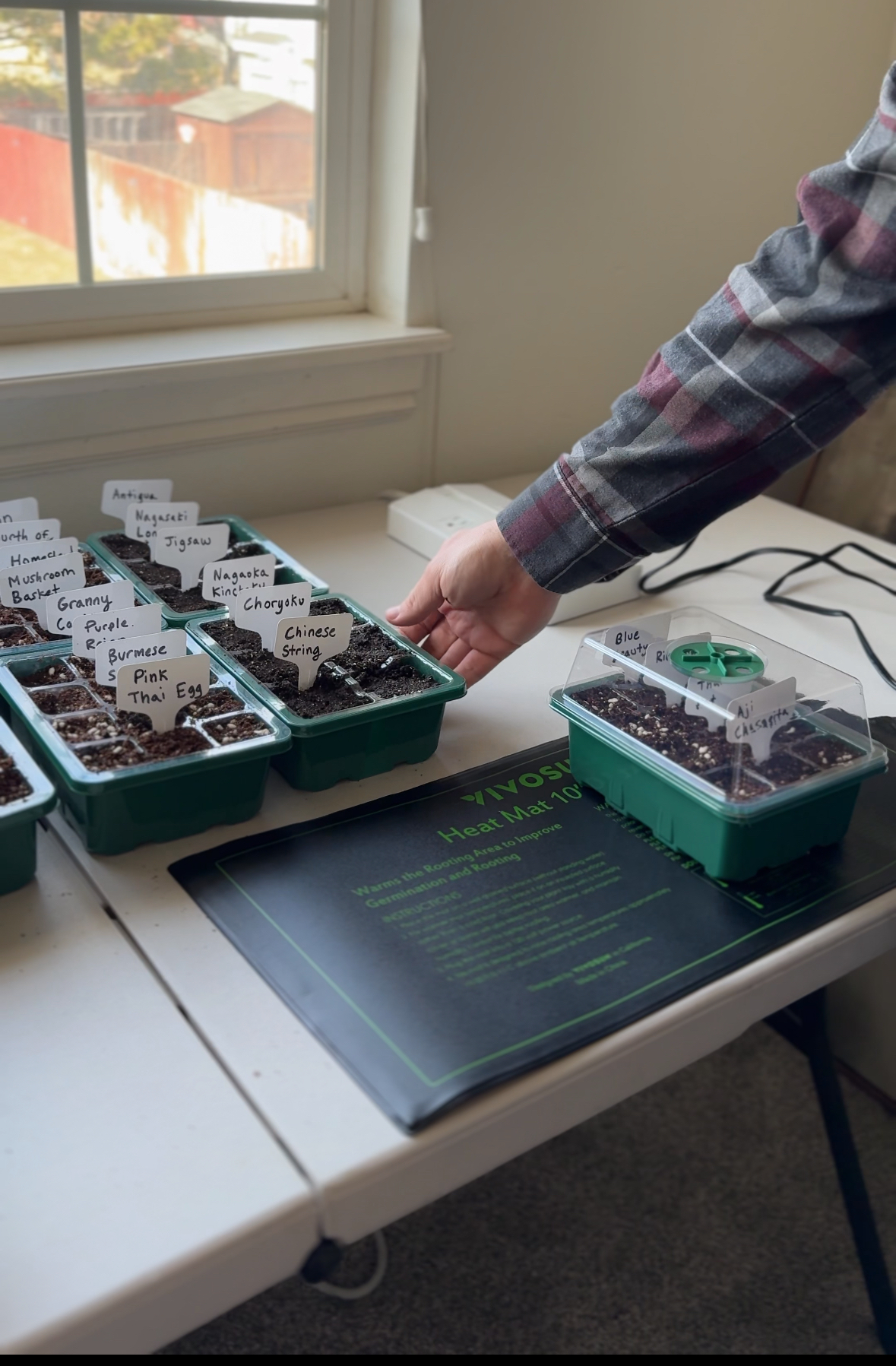
5. Dry the Seeds
- Spread the seeds on a paper towel, coffee filter, or parchment paper.
- Let them air dry for about 1 week in a well-ventilated spot.
- Label them with the tomato variety and date!
- Don’t dry them on a paper towel if you want to store long-term — they’ll stick! Use a coffee filter or parchment for easier removal.
Ready to Plant or Store
- Once fully dry, seeds can be stored for up to 5 – 10 years in cool, dry conditions.
- Or plant right away indoors in seed trays or outdoors when the soil is warm.
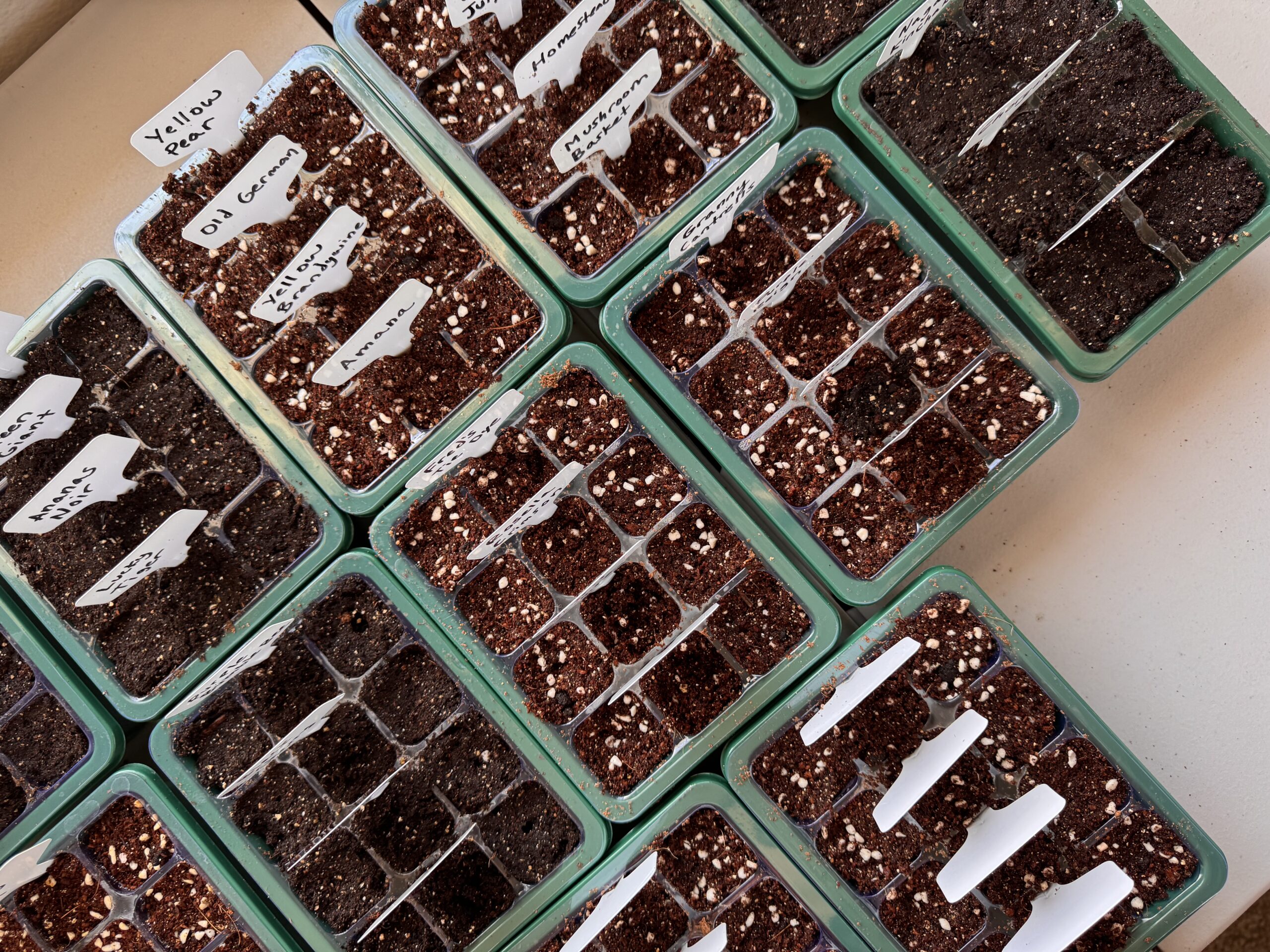
Thanks for reading along, guys!
If you enjoyed this blog post, be sure to check out my other gardening blog posts:
- How to Start a Garden on a Budget for Under $100
- Essential and Nice-to-Have Garden Products for Your Perfect Setup
- My Garden Setup: 3 Best Garden Containers for Every Gardener
- Understanding Garden Light and Shade: A Simple Guide
- How to Build a Homemade Trellis Using Cattle Panel
Be sure to follow me on social media for daily content and instructional videos about gardening!

